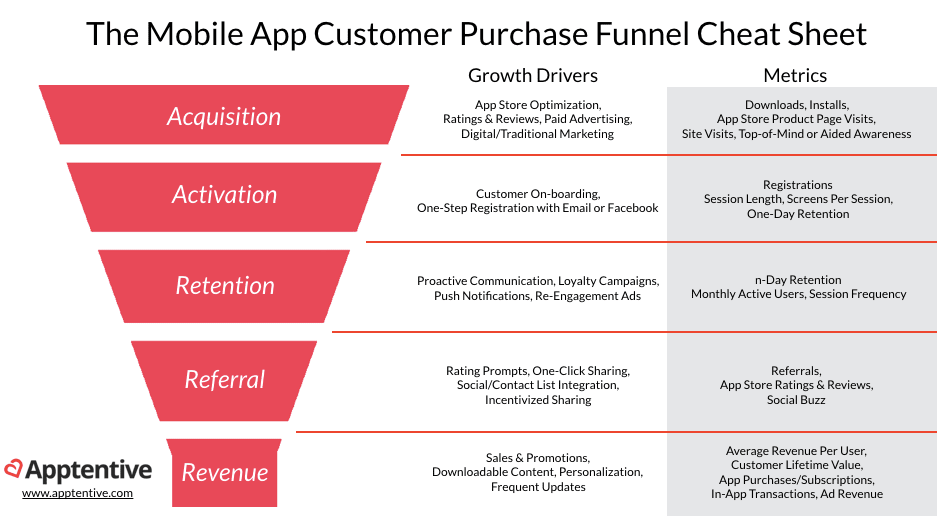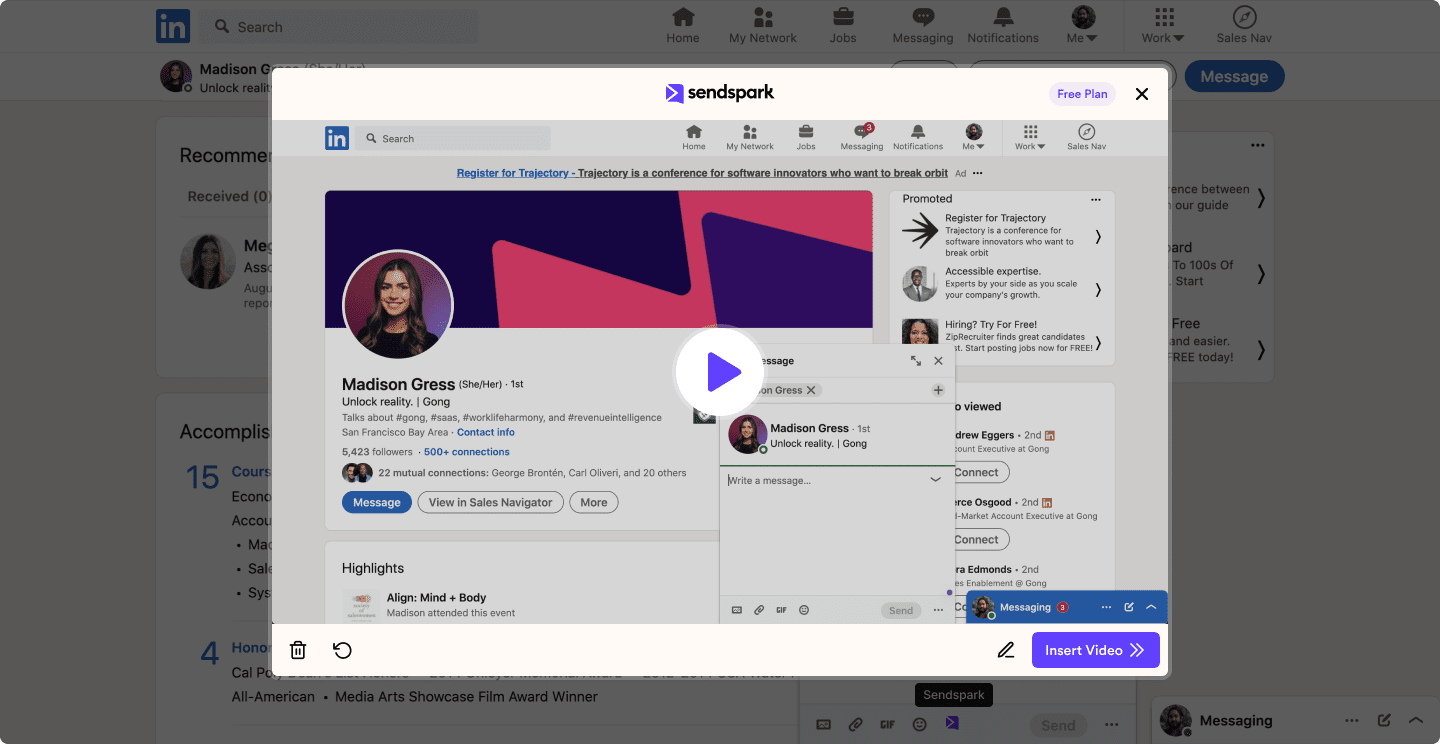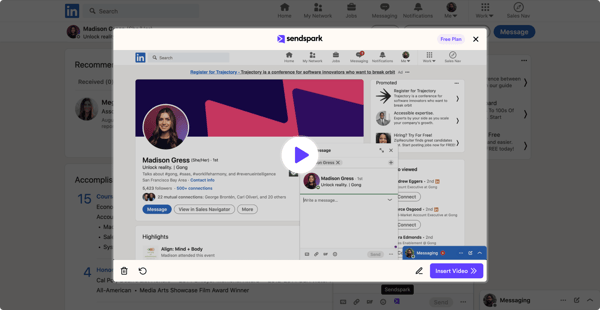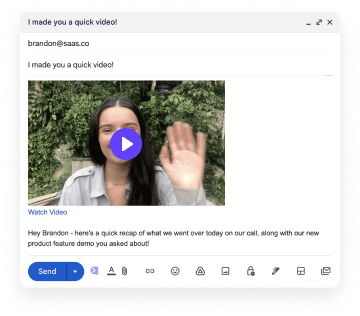Video is a powerful medium for customer onboarding. Almost 80% of users remember a video they watched in the last thirty days with remarkable accuracy.
So when it comes to customer onboarding, it's no surprise that video messages can increase engagement up to 400%.
They are engaging, thoughtful, and educational. Videos enhance customer retention, user experience, and product value all throughout the marketing funnel.
In this post, we share video types you can use to boost onboarding and increase sales. But before that, let’s first see what customer onboarding is and why it is important.
Customer Onboarding In a Nutshell
 Customer onboarding is important for helping customers "activate," which is is a critical stage of the customer journey:
Customer onboarding is important for helping customers "activate," which is is a critical stage of the customer journey:
- Acquisition
- Activation
- Retention
- Revenue
- Referral
Generally, people tend to think of the onboarding phase as the period in which customers learn about your product. However, this is only a superficial understanding of it. In reality, during the onboarding stage, the customers learns about your features, but they also estimate if your product aligns with their values and goals.
Why Is Video Onboarding So Important?
During the entire customer lifecycle, you are building a relationship with your customers. And just like with any other relationship, the first impression is crucial. You can think of the onboarding phase as the occasion to set strong foundations for the potential relationship in the future.
If properly conducted, onboarding...
- welcomes customers, so they feel valued
- makes sure your customers are set up for long-term success
- increases trial conversions
- drives referrals (as 75% of loyal customers will recommend you to other people)
A good onboarding conversation rate is 30%. If your conversions rates are lower than that, you might have too many steps that are adding friction.
Good onboarding questions ask about your customers' goals and specifications to help them achieve that "a-ha!" moment with your product as fast as possible. Bad onboarding questions ask for personal information or information that could easily be found automatically with a data enrichment tool. If you only have a couple minutes of your customer's attention, you do not want to waste it by having them type out their industry, company size, etc.
In general, great onboarding helps your customers achieve their goals — NOT help your sales team sell to them. Though ideally you're doing both at the same time! If you focus on getting your customer a win as fast as possible, there should be no problem converting or expanding their account.
Advantages of Video Onboarding
Video poses several advantages over text for customer onboarding:
- we can convey more information in much less time through a video
- video is more engaging for our senses (it is colorful, has sounds, portrays body language, etc.)
- video is easier to process.
Here are some ways you can use video onboarding to help your customers achieve success:
Ways to Use Video Onboarding
1. Personally Introduce Yourself
Most purchases are done online these days. That means that we have lost that beautiful moment of face-to-face interaction between the business and the customer. In the past, they could chat over the product, the customer’s needs, and the value they can both get out of it.
Luckily, we can partially compensate for this lack with video material. You can make a video in which you will briefly introduce yourself and present your offer. In it, you can provide detailed but comprehensive guidance, show the value, and potential of the product. Put simply, you can explain what will the customers get in turn for their money.
Although the communication doesn’t go both ways, this is the closest we can get to the old merchant-buyer in-person discussion.
2. Make Product Tutorials
Videos are amazing media for tutorials because it is easier to just show how to do something instead of explaining it.
In terms of instructions, the potential of videos surpasses the onboarding phase and goes deep into the adoption and value realization phases.
Video tutorials should be clear, detailed, and friendly. They should provide your customers with useful tips and practical advice.
3. Offer Help and Support
Depending on the product type, the learning curve customers have to achieve may be more or less steep. In case it takes some knowledge to successfully handle the product, it would be great if you could predict potential issues and prepare solutions.
Some businesses have a FAQ section with supportive videos that help users resolve common concerns regarding how the product works.
Another reason why this is a very efficient solution is that video automation relieves your customer support from the need to explain in detail how things work. Instead, users can be asked to consult the videos first and then come back for additional questions.
4. Showcase Your Team and Culture
If you own a business, you are probably aware of how important personalization is for marketing and customer loyalty. In a situation where the market is oversaturated with new brands and products, people search for meaningful connections. They want us to know them, and to respect their individuality.
In marketing, we usually use the term “personalization” in the context of advertisement and personalized ads. However, another form of personalization is letting the attention go both ways. We are constantly learning about our customers, we ask for their feedback, read their comments on social media, and count their likes.
For the change, we could occasionally open our doors as well. We could show them our team, our headquarters, and let them feel the office atmosphere. As you can imagine, there is no better medium to do this than video.
5. Share Customer Stories and Build a Community
It has been proven that people tend to trust amateur videos much more. This is because they are more personal and easier to identify with. Starting a campaign in which you would invite your customers to share the videos in which they will talk about what your brand means to them is a great thing to do because:
- boosts your social media engagement
- improves the relationship with the existing customers
- enhances word-of-mouth
- makes people know each other and builds the community.
Check out Sendspark's request video feature to easily collect customer testimonials.
How to Make Customer Onboarding Videos
Sendspark makes it easy to create videos for customer onboarding. Whether you're proactively reaching out to customers or replying to inquiries, Sendspark helps you capture quick videos of yourself or your screen to send to customers and help them get up to speed immediately — without needing to spend 30 minutes on a Zoom meeting.
Sendspark integrates with Gmail, LinkedIn, Hubspot, Intercom, Zendesk and more, so you can send onboarding videos to customers without leaving the platforms you already use and love.

Conclusion
A major benefit of both physical and SaaS customer onboarding is better customer retention. In other words, a good first impression will make fewer people give up on your product or service. If you make yourself clear, friendly, and if your product aligns with your target audience’s needs and values, more people will stick around.
Maybe our culture has evolved, but our senses are the same as they were hundreds of thousands of years ago. Our eye is still trained to track movement, and it is very hard for it to restrain from paying attention to motion. This is the deeper reason videos are so important: they are a deeply engaging medium for the human sensory system, and are therefore indispensable in customer communication.




